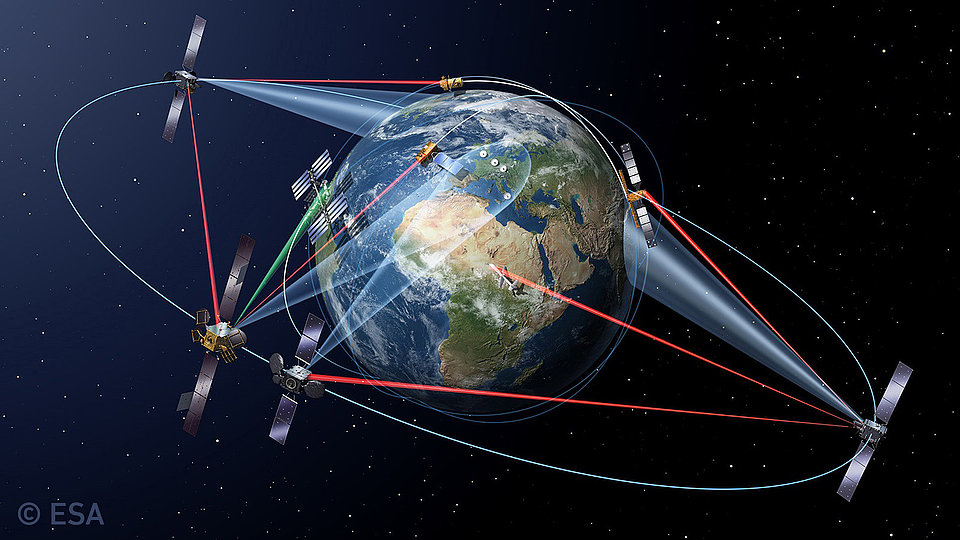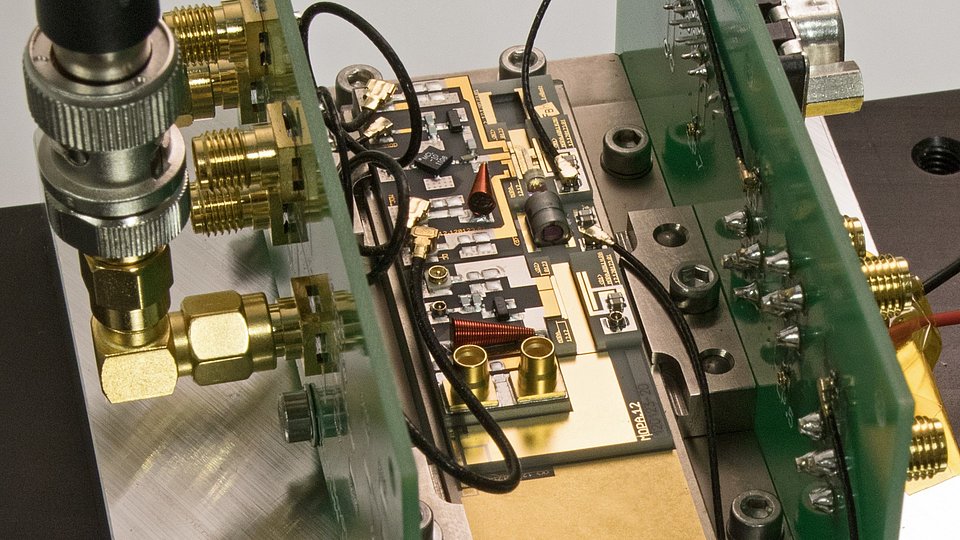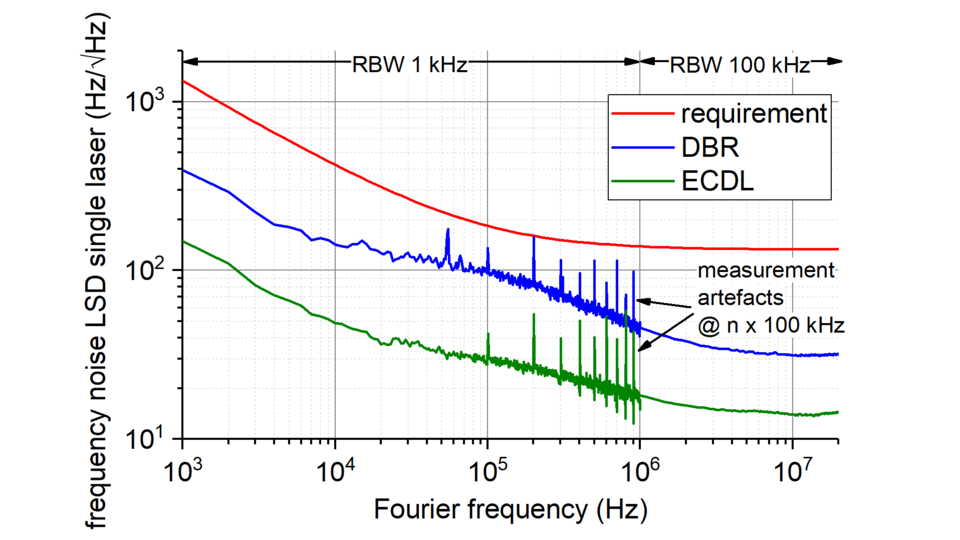Optical SatCom
Optical communication systems are facing the continuous need for increased data rates. Employing wavelength division multiplexing (WDM), i.e. multiple spatially overlapped but spectrally shifted channels, is one way to boost the data rate of these systems. At the same time, this approach also increases the number of lasers, modulators, demodulators, and electronics. However, volume and mass in satellite communication terminals are limited. Compact diode laser-based photonic modules offer a way out. They feature a small size, low mass, and high intrinsic mechanical stability combined with a high electrical to optical conversion efficiency.
The smallest possible package could be achieved by utilizing monolithic diode lasers like distributed Bragg reflector (DBR) lasers. However, coherent optical communication systems require high spectral stability, i.e. the ability to establish relative phase stabilization between receiver (RX) laser and transmitter (TX) laser with a sufficiently small residual phase error. Hence, an appropriate ratio of the level of the frequency noise of these diode lasers and the achievable servo bandwidths is required. Diode laser systems based on an extended cavity diode laser (ECDL) configuration are another option and have already demonstrated to be suited for phase stabilization in various applications. This proof has yet to be accomplished for DBR lasers.
Together with industry partners SpaceTech GmbH and Tesat-Spacecom GmbH & Co. KG, FBH has taken part in an ESA-funded activity to investigate the suitability of these two diode laser types for WDM in coherent optical communication terminals operating at 1064 nm. In the project, a proof of concept demonstrator (POCD) is set up and two channels are implemented – one based on ECDL lasers and the other on DBR lasers. Both channels utilize micro-integrated modules realized by means of FBH’s micro-integration technology. While the RX lasers are either ‘pure’ ECDL or DBR lasers, each of the TX lasers includes an additional semiconductor optical amplifier to boost the output power in front of a shared fiber amplifier.
In a first step, the suitability of the two types of lasers, i.e. DBR and ECDL lasers, for coherent communication has been estimated with respect to the required phase stabilization. For this purpose, the frequency noise spectra of ECDL and DBR lasers were measured. The principle behavior of the linear spectral density (LSD) of the frequency noise, i.e. white noise at high Fourier frequencies and increasing noise towards lower Fourier frequencies is the same for both lasers except for the noise level. The DBR laser exhibits a white noise level of about 31 Hz/Hz1/2, which corresponds to a Lorentzian linewidth of 3 kHz, whereas the ECDL exhibits a white noise level of about 14 Hz/Hz1/2, which corresponds to a Lorentzian linewidth of 600 Hz. These measured data were compared to the theoretically estimated level of acceptable frequency noise. Here, the LSD of the ECDL’s and the DBR laser’s frequency noise is well below the requirement. Hence, not only ECDL but also DBR lasers are considered suitable for coherent optical communication.


